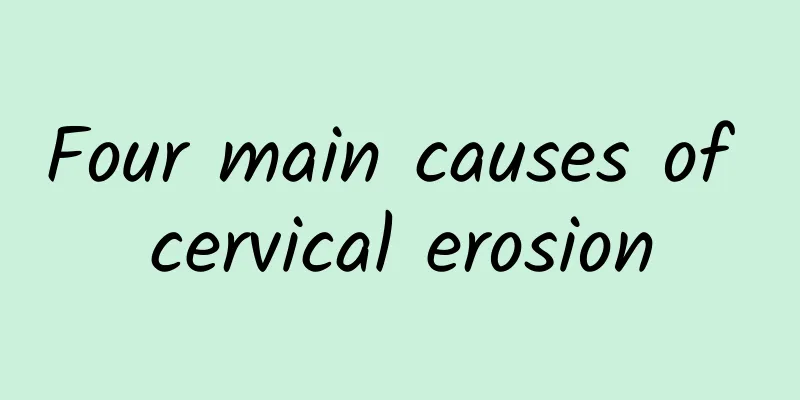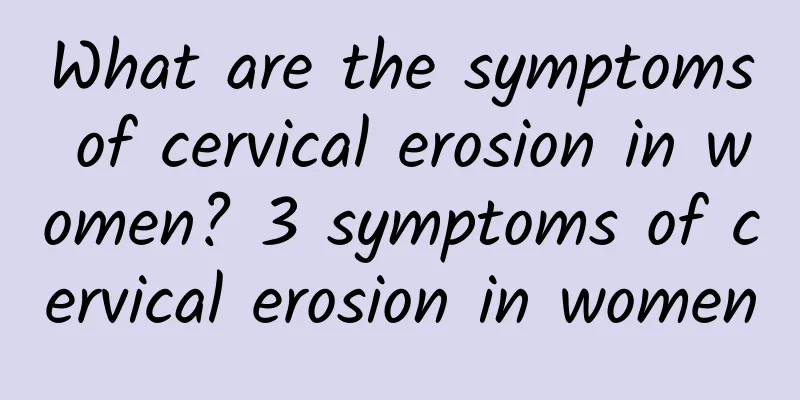Vulvar pruritus White lesions of the vulva

|
Vulvar pruritus accompanied by vulvar white lesions may indicate pathological changes in the vulva, and you should seek medical attention in time to rule out the possibility of serious diseases. Common causes include pathological factors such as fungal infection, chronic inflammation, decreased hormone levels, and vulvar leukoplakia. Treatment methods mainly include drug therapy, local care, and surgical intervention when necessary. 1. Fungal infection One of the most common causes of vulvar itching is fungal infection, especially Candida infection. In addition to itching, patients may also have white patches and increased secretions. For this type of situation, antifungal drugs such as topical ointments such as clotrimazole and miconazole can be used. When the symptoms persist and are severe, oral antifungal drugs such as fluconazole can also be used. During this period, care should be taken to keep the vulva clean and avoid long-term moisture to provide suitable growth conditions for the lesions. 2Chronic inflammation or allergic reaction Chronic inflammation or allergies to chemicals may also cause vulvar itching, accompanied by tissue hyperplasia or white lesions. In daily life, the chemical ingredients in certain detergents, shower gels and hygiene products may cause contact dermatitis or allergic reactions. It is recommended to avoid using irritating cleaning products and choose mild and fragrance-free personal care products. If the itching symptoms persist, the dermatologist may recommend the use of antiallergic drugs or glucocorticoid ointments to improve the symptoms. 3. Decreased hormone levels In postmenopausal women, the decline in estrogen levels may cause atrophic changes in the vulvar skin and mucosa, manifesting as itching and white lesions, scientifically known as atrophic vulvitis. Topical estrogen cream rings or vaginal rings can relieve symptoms, improve atrophy of vulvar tissue, and restore elasticity. 4 Leukoplakia vulvae or vulvar intraepithelial lesions Vulvar leukoplakia is a high-risk lesion that often presents as white infiltration and thickening of the local skin of the vulva, accompanied by itching. Some cases may progress to precancerous lesions called vulvar intraepithelial neoplasia (VIN). In this case, a local biopsy is usually required to confirm the diagnosis. Treatments include surgical removal of the lesion, laser therapy, or local immunotherapy such as imiquimod. Early diagnosis and intervention are particularly critical. In daily preventive measures, you should pay attention to proper cleaning of the vulva, wear loose cotton underwear, and avoid using care products containing chemical additives. Early symptoms should be treated as soon as possible, the cause should be identified in time and actively treated to avoid progression of the disease or more serious problems. If the problem continues to worsen, go to a regular hospital for detailed examination and treatment immediately to grasp the best time for intervention. |
<<: Is vaginitis and adnexitis difficult to treat?
>>: Pelvic cystic mass after abortion
Recommend
Honey water promotes digestion, helps lose weight and detoxifies! 4 key best times to drink honey water
Honey is rich in antioxidants and contains more t...
What harm does spontaneous abortion do to the body?
Many couples want a baby, but some women have a m...
What causes excessive menstruation? Is excessive menstruation a symptom of uterine fibroids?
Is menorrhagia a symptom of uterine fibroids? The...
How to treat chronic pelvic inflammatory disease
How is chronic pelvic inflammatory disease treate...
Successful weight loss after childbirth! 4 Key points to avoid weight gain
Successfully losing weight after childbirth is th...
What are the specific causes of cervical erosion in women?
Many people are surprised when they suffer from c...
Who is not suitable for abortion?
Do you know that abortion refers to the terminati...
What medicine is good for irregular menstruation? What are the benefits of Siwu Decoction for irregular menstruation?
For women, they pay great attention to the regula...
What are the early symptoms of ovarian cysts and what are the dangers
What are the early symptoms of ovarian cysts? Wha...
What are the symptoms of mild cervical erosion in women? 5 methods can effectively prevent cervical erosion
What kind of disease is cervical erosion? When wo...
With just a towel, Akemi Katsuki teaches you how to flatten your belly and lift your butt
Akemi has a nice and toned body, which she achiev...
Mother and daughter work together to lose 112 kilograms! "Gastric Reduction and Colonectomy" Ends Morbid Obesity
Is obesity hereditary? When a family member has o...
Swimming to lose weight, calorie intake of men and women is very different, supplementing 3 nutrients without burden
In scorching hot weather, swimming can not only c...
He drank whey protein every day to lose weight, ate high-protein food without starch... and ended up with chronic renal dysfunction
Losing weight is not just about losing a few kilo...
To create round and firm breasts, try the modified version of the knee push-up
Do you always have no confidence in wearing cloth...









